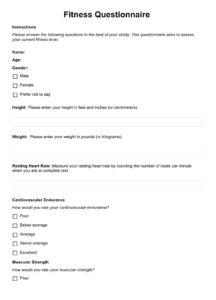As a personal trainer, creating personalized and effective fitness programs for your clients is crucial. A well-structured personal training client program template sets the foundation for a successful and rewarding client experience. It ensures that you deliver a tailored approach, addressing each client’s unique needs, goals, and fitness levels.
The benefits of using a personal training client program template are numerous. It streamlines the process of designing and implementing individualized programs, saving you time and effort. It also enhances consistency in your approach, ensuring that all clients receive a high-quality and safe fitness experience.
Essential Elements of a Personal Training Client Program Template
To create a comprehensive personal training client program template, consider the following essential elements:
- Client Assessment: Begin by thoroughly assessing each client’s physical capabilities, health history, fitness goals, and lifestyle factors. This information forms the foundation for developing an individualized program.
- Goal Setting: Establish clear and specific fitness goals with your clients. These goals should be SMART (specific, measurable, achievable, relevant, and time-bound) to ensure motivation and progress tracking.
- Exercise Selection: Based on the client assessment and goals, carefully select exercises that effectively target specific muscle groups and fitness objectives. Consider a variety of exercises, including bodyweight movements, resistance training, and cardiovascular activities.
- Exercise Progression: Design a plan that gradually increases the intensity, duration, and complexity of exercises over time. This ensures continual progress and prevents plateaus.
Program Design and Implementation
Once the essential elements are in place, proceed to design and implement the personal training client program template:
- Periodization: Structure the program into distinct phases, each with a specific focus and intensity level. This allows for optimal adaptation and recovery.
- Exercise Frequency and Duration: Determine the optimal frequency and duration of each exercise session based on the client’s fitness level and goals.
- Rest and Recovery: Include adequate rest periods between sets and exercises to promote recovery and prevent overtraining.
- Nutrition Guidance: Provide general nutrition guidelines to support the client’s fitness goals. Encourage a balanced diet that promotes overall health and well-being.
- Tracking and Monitoring: Implement a system to track and monitor the client’s progress regularly. This helps identify areas for adjustment and ensure optimal results.
By following these guidelines, you can create a personalized training client program template that empowers you to deliver effective and engaging fitness experiences to your clients. Remember to continually evaluate and refine the program as clients progress, ensuring that it aligns with their evolving needs and goals.

